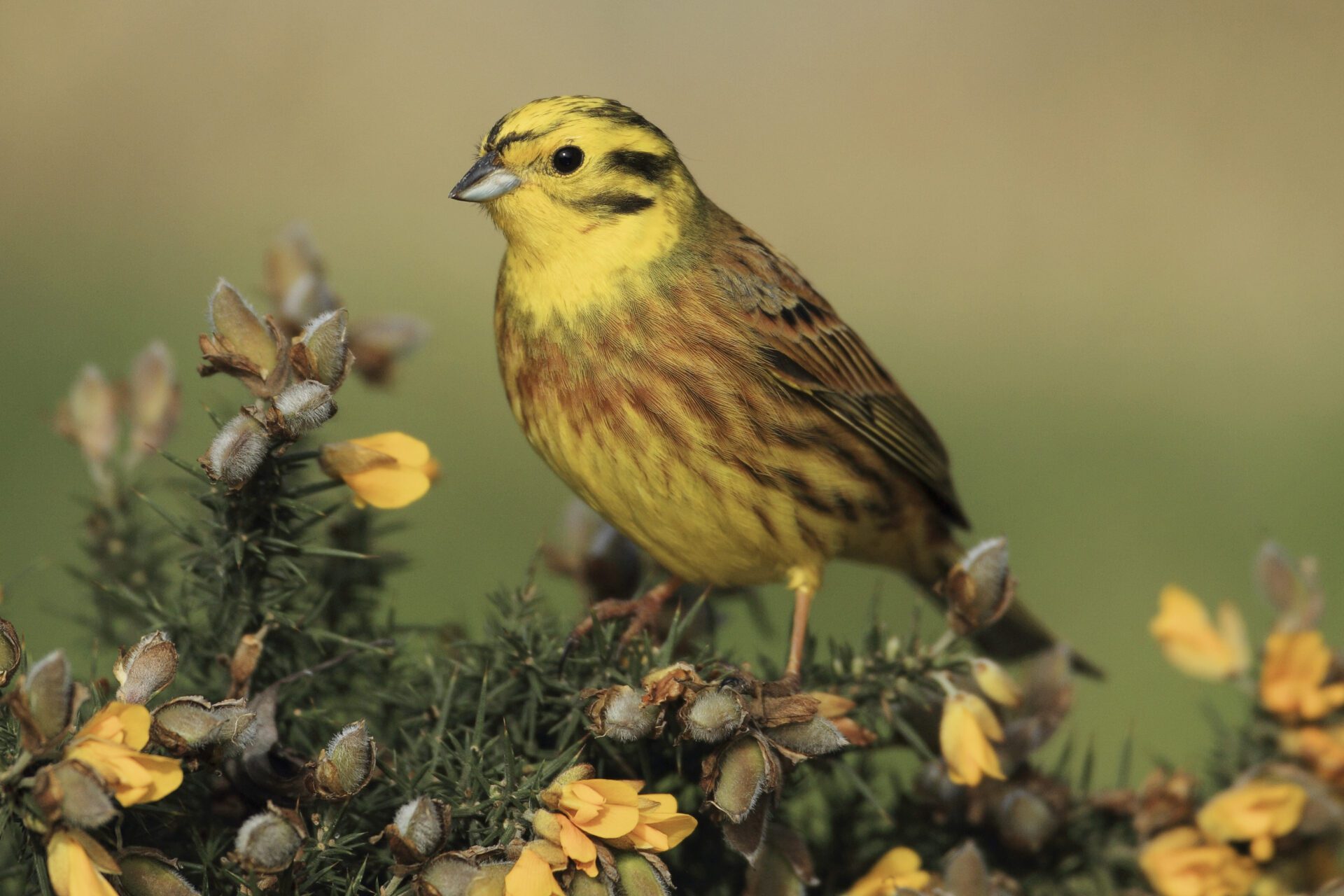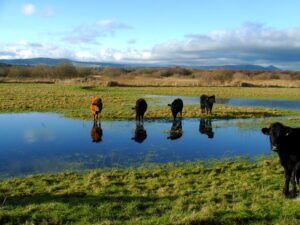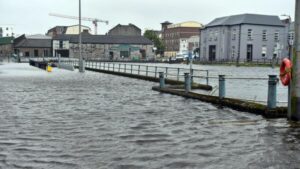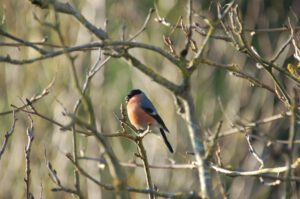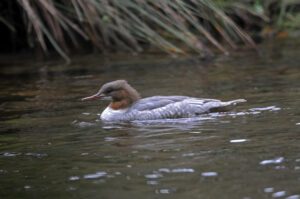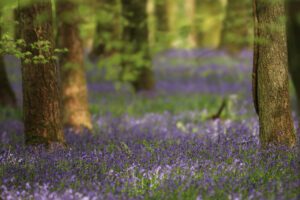The last few months have been destabilising for us in Ireland. June 2023 was the hottest June ever recorded, with the west and northwest experiencing a marine heatwave in coastal waters. Then July came around and we saw above average rainfall across the country, with Donegal recording 76mm of rain fell in a single day. In September, we broke more records. This time for sunshine and heat, with Munster and Leinster experiencing their warmest Septembers yet.
Grazing cattle in a coastal field
If June was hot, July was wet, and September was warm, October was one of our warmest, windiest, and wettest ever. Temperatures reached nearly 20C, and flash floods and stormy surges wreaked havoc across Ireland. Cork lashed its highest October rainfall in 6 years, with parts of the city centre submerged underwater. At the other end of the country in Louth, 60mm of rain fell in 24 hours and cascading floods impacted homes and businesses.
Flooding at Fr Mathew quay in Cork City. Eddie O’Hare
Enter November, and we’re two weeks out from COP28, the climate change conference in Dubai. COP stands for ‘Conference of the Parties’ and this is COP28 because it is the 28th time that world leaders are coming together to try and limit global temperature rise and curb emissions. Politicians will discuss how we can heal the planet instead of heating it, and how we can transform our societies to be more sustainable and regenerative.
But what’s any of this got to do with nature? Or birds?
We already know that climate breakdown is impacting our bird species and their habitats. Global temperature rise and more extreme weather is destroying some of birds’ preferred habitats, making it harder for birds to breed, forage and rest. Some extreme weather events, such as storms, heatwaves, and droughts, have a direct impact bird mortality, destroying their nests and disrupting food availability.
Bullfinch. Brendan Shiels.
As the newly published seabird census (2015-2021) reveals, seabirds are on the frontline of the climate and nature emergency. Among other pressures, climate change impacts continue to drive the decline of seabirds. The Black-legged Kittiwake has declined by 36% in Ireland since the previous census and the Puffin is now a Red-listed bird of conservation concern, meaning it is vulnerable to extinction.
Cutting carbon emissions therefore goes hand in hand with nature recovery. Simply put, if we don’t protect nature, climate action will fail. And vice versa. There is no better carbon capture technology than nature. Our natural ecosystems, like trees, kelp forests, peatlands, oceans, and seagrass, not only support our needs and wellbeing by providing us with oxygen to breathe, but they also capture and absorb carbon excess from the atmosphere. This is why they are often called “carbon sinks”.
However, they can only sequester carbon when they are in a healthy, undamaged state.
Yet, decades of plundering trees rather than planting them, and polluting our seas rather than protecting them, means that the natural world is being destroyed at a rate faster than it can regenerate. As a result, natural ecosystems are losing their ability to sustain themselves and the species they provide for. Species like birds, but also like us.
During the past 27 COPs, there has been some funding committed for nature-based solutions. Nature-based solutions were included in the COP27 text for the first time, with forests, oceans and agriculture having their own section. COP27 also saw the creation of the Forest and Climate Leaders’ Partnership, building on some of the forest pledges made in Glasgow during COP26. Next to forests, wetlands are still waiting for their moment under the sun. Over the past 300 years, Ireland has lost more than 75% of our wetlands, yet at COP26 and COP27, there were no concrete commitments on wetlands.
Goosander, female. Colum Clarke.
We’ve really been tinkering around the edges, with nature delivery plans often lacking and pledges no more than words on a page. To deliver planetary-scale transformation for nature, governments should be prepared to both set more ambitious policy, invest money, and put detailed planning and interim timelines behind its nature recovery plans. These actions should also build and help to deliver the targets and activities listed within the Nature Restoration Law. The text of the proposed law has now been agreed, and the next steps including getting votes in the European Parliament Environment Committee and Plenary, and the European Council to rubber-stamp the legislation.
Our governments have committed to halting and reversing biodiversity loss by 2030, but talk is cheap. How do they plan to get there? COP28 must hold Parties accountable to deliver on existing nature agreements from previous COPs, including CBD COP15 that took place in Montreal at the end of last year. COP28 must also prove a pivotal shift away from words and towards action, marking the point when our leaders grasp that the climate and nature agendas are mutually reinforcing.
Bluebell Forest. Andrew Kelly.
Nature is our lifeblood. Every second breath we breathe comes from the ocean. Trees and plants give us food, supporting our health. Forests and wetlands act as natural filtration systems, purifying our drinking water.
Nature is our ally, and it must be treated as such in Dubai. It is only by safeguarding nature that can we meet our climate commitments and secure a liveable future for generations to come.

